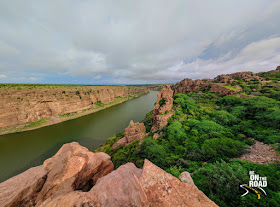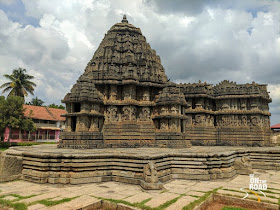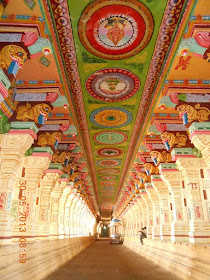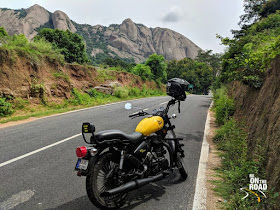
The earliest record of its name dates from the late 6th century BC. It is a UNESCO world heritage site and a place of unique historical and cultural heritage. It’s stories even feature in many Christian books and sources. It is Turkey’s most popular and most visited tourist destination. It has been featured in many Hollywood, European and Middle Eastern movies. I am talking about the mesmerizing landscape of Cappadocia in Central Turkey.

Millions of years ago, this part of Turkey used to be an active volcanic region. And it were the eruptions from these volcanoes that set the base for the rocks of Cappadocia. Wind, rain, snow and other aspects of mother nature then moulded these rocks into spectacular pillars and minarets. People then carved out churches, cave houses, monasteries and cities from this soft volcanic rock.

It is this heady combination of nature and man made creation that give Cappadocia its unique flavour. The beautiful marriage of fairy chimneys, rock-cut temples, cave houses, multi-levelled underground cities, monasteries, churches, a rich heritage and an amazing weather beaten rocky landscape makes Cappadocia one of the most magical places in the world. It is a place that would easily be a part of any travel bucket-list and one that would certainly be a highlight of a Turkish holiday itinerary. Cappadocia becomes even more magical during the winter months when the blanket of snow on these fairy chimneys and minarets gives this heritage site an out of the world look and feel. To see this surreal winter world up close, do look up JustFly, find the best deal on flights to Turkey and plan your dream winter holiday to Turkey’s Cappadocia.

Whether you experience it from above (in a hot air balloon), experience it from below (through its underground cities) or soak its charms from the ground level (through hikes, walks, treks, biking or quad biking trips), Cappadocia is bound to leave you speechless. Such is the beauty and charm of one of the most unique natural wonders in the world.

It is the kind of place that appeals to people of all ages and interests. You could be a nature lover, a culture enthusiast, an adventure junkie, a honeymooning couple or a budget backpacker, Cappadocia’s beauty is bound to keep you captivated and enthralled.

A simple walk through its heritage circuit, a hot air balloon ride at sunrise, a quad biking session through its many valley and mountains, a trek to its deepest corners, a trip to its many subterranean cities, a stay in its iconic cave houses or even a class of Turkish cooking, there are enough and more activities to keep everyone interested and involved on your Cappadocia holiday.
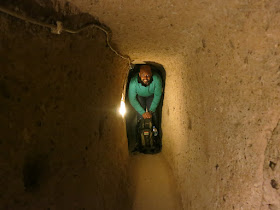
While most people just visit the UNESCO World heritage site, the underground cities, take a few iconic photographs and then leave, I think one has to let Cappadocia grow on you. Each valley, pillar, cave and mountain have stories to tell you. After all these rocks of Cappadocia have seen everything from the riches of Persia, the peaceful kingdom under Alexander the Great, the Lydian, Roman and Byzantine kingdoms, the time of slavery, the vast defence networks in their underground cities, the rise of the early Christian philosophy to modern day conquests by Muslim invaders.

Once these rocks start talking to you, you get to experience one of mother nature’s best creations along with a rich legacy left behind by 8000 plus years of kings, emperors, warriors, invaders, architects and churches.

While Goreme’s open air museum, Zelve open air museum, Rose valley, Pigeon valley, Monk’s valley, Derinkuyu underground city, Uchisar castle and love valley are some of the main highlights, the entire region of Cappadocia is full of some magical fairy chimneys and amazing stories. While many have been discovered, there are archaeologists who are discovering more remnants of this fantastic ancient civilization.

So, whatever your interest might be, you would have realized by now that Cappadocia with its many charms is one of the most magical places in the world and is a must-have in your international travel bucket-list. I certainly love this gorgeous place and would certainly return to it in a heart beat. What about you? Have you been there as yet? What do you think of it? Do you wish to visit it soon? Do let me know your thoughts in the comments below.

Which is the best season to visit Cappadocia:
Cappadocia looks like a dreamland in winter due to all the snow. This would be a great time to go for photography and for stunning sights. Spring would also be a great season to visit Cappadocia. Late summer months of July and August are best avoided as temperatures can reach as high as 40 degree Celsius and most places of stay do not have air-conditioning. August to December is also a good time, though it can rain from time to time.
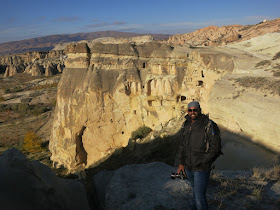
How long should you plan to stay in Cappadocia:
Even though you can see most of Cappadocia in 2 days, I would recommend you staying here for at least 4 days. That way, you can attempt to experience multiple activities here, like hot air balloon rides, quad biking, trekking, underground cities, historical walks, cooking classes, etc.

The highlights of a visit to Cappadocia:
1) Hot air balloon ride over Cappadocia – Personally, I am not a big fan, but since everyone seems to enjoy it, I am mentioning it here.
2) Quad biking through the different valleys and mountains in Cappadocia. This allows you to experience the lay of the land from extremely close quarters.
3) Ancient multi-levelled Derinkuyu underground city – This is a must experience in Cappadocia as it shows how people of yester years lived underground and had almost all kinds of facilities.
4) Sunset at Red valley is perfect for photographers.
5) Walk through Zelve open-air museum and watch the cave houses, churches and living quarters of people who used to live here many hundreds of years ago.
6) Monks valley for some of the best rock formations in Cappadocia.
7) Love valley for a sunset view and for a view of Turkey’s tallest mountain.
8) And last, but not the least, the Aktepe white hill and Goreme open-air museum.

How to reach there:
The nearest airport to Cappadocia is either the Kayseri or Nevsehir airport. Both these airports are well connected with Istanbul and are about an hour’s drive to the main tourist attractions of Cappadocia.
Turkey also has very good buses that ply on excellent roads. If time is not an issue and if you wish to travel on a budget, opt for the comfortable VIP buses that connect Cappadocia with the rest of the country.
Kayseri would be your nearest railroad. It offers good connectivity with the rest of the country. One can take a taxi or bus to reach Goreme from here.

Where to stay:
Usually, cave hotels and cave houses are the most popular option of staying in Cappadocia. But, let me warn you that in spite of their innate charm, they can be damp, cold, musty and have very low ceilings. If you wish to opt for a cave room, do make sure that it is really top class.
There are also many Turkish homes where you can stay in Cappadocia. They give you local flavor both in terms of interactions as well as food.
As Cappadocia is one of the most popular destinations of Turkey, there is no paucity of stay options here. From luxury to budget backpacking, the options are aplenty.
The only key thing for you to decide is the location. You could opt for the popular Goreme, the city like Nevsehir, the quieter Uchisar or even Avanos and Urgup.

Other popular places to explore in Turkey:
1) The city of Istanbul that straddles Europe and Asia
2) The absolutely spectacular Lake Van near the Turkey – Iran border on the east
3) Gobekle Tepe, the oldest place of worship in the world
4) Lycian way, 550 kms of ancient trail on the southern coastline of Turkey that is made up of sensational beaches, great architectural ruins, rich Greek history, stunning views and pure trekking bliss
5) Ephesus and Aphrodisias, two ancient Greek ruins in Turkey
6) The natural hot water springs of Pamukkale
7) The islands in the Aegean sea, especially the ones off Bodrum, Marmaris and Fethiye
8) The historical town of Mardin that overlooks Mesopotamia
9) The black sandy beaches of Trabzon
